by Bruce Doorly

It was there that Martin Luther King Jr. gave his famous I Have a Dream speech. This march/rally was well organized, peaceful, had a clear message with goals, and led to significant laws being passed.

Also, in 1954-55 in Montgomery, Alabama, a bus boycott to protest whites being given first priority seating led to a Supreme Court decision to abolish that practice.
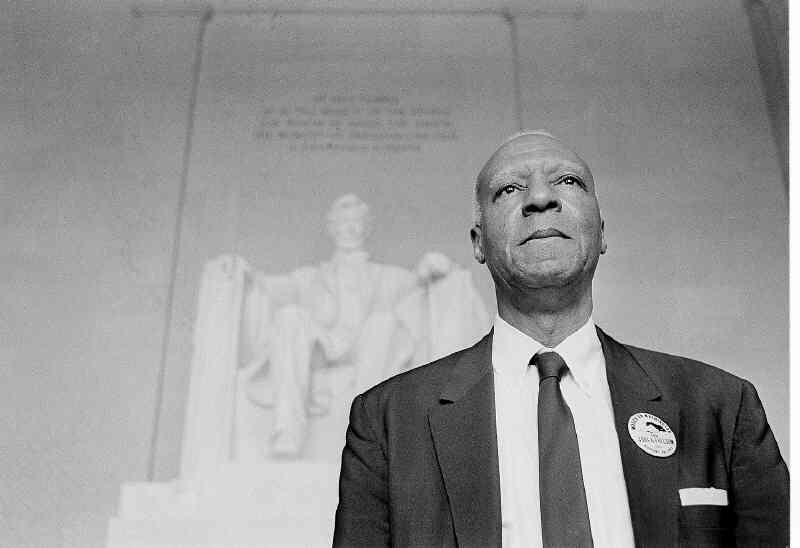
The timing was appropriate as it was the 100th anniversary of the Emancipation Proclamation which freed the slaves.
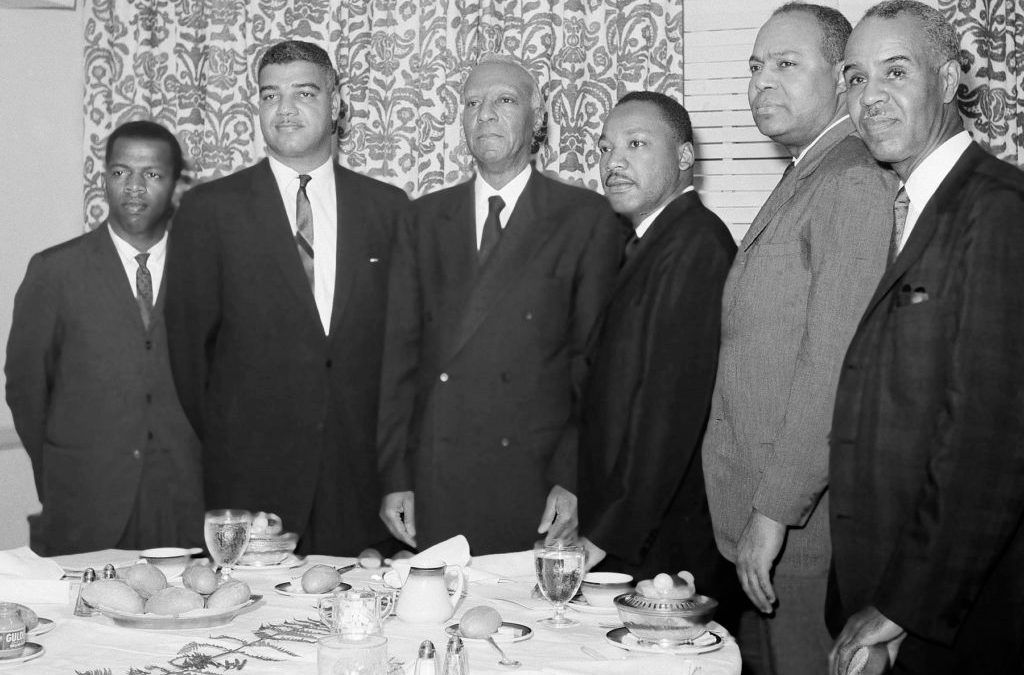
But they put their differences aside and managed to work with one another to plan this protest march. The planners had much to do. They needed to decide what the goals of the march would be and who would get to speak. And would there be any kind of entertainment? They also had to make sure that there would be widely available food and water.
A. Philip Randolph, Martin Luther King,
James Farmer, and Roy Wilkens

Word was put out throughout the country that this was an important event. Those who cared about equal rights must attend. The date was set for Wednesday, August 28th 1963. They had hoped for 100,000 people to attend.
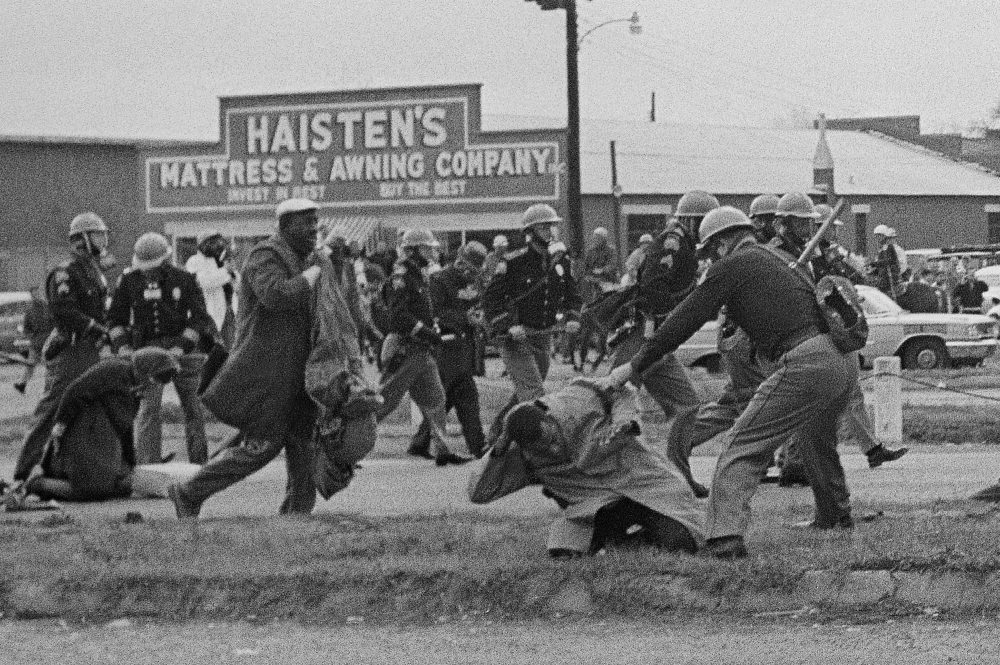
While violence was feared, it should be noted that Martin Luther King Jr., recognized leader of the civil rights movement, had been successfully promoting a strategy of non-violent protest. A tactic that they held to even when they were being clubbed by police or attacked by white supremacists. The strategy was that their non-violent response would elicit sympathy with the majority of Americans. This tactic was working as a significant portion of white America was beginning to support their cause.
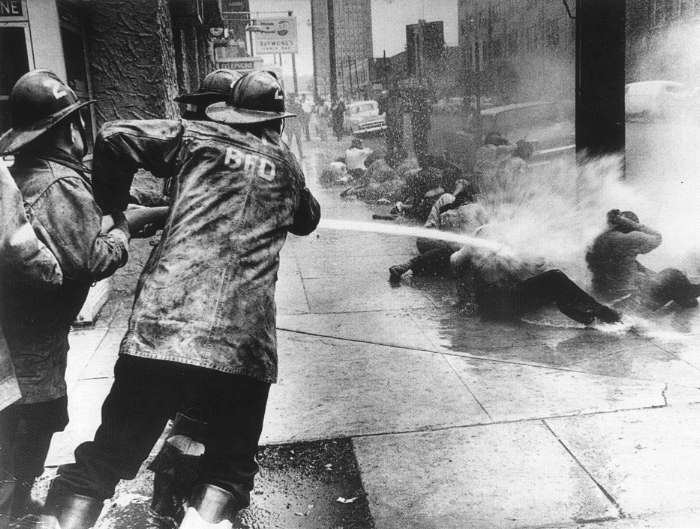
These images were captured on film and shown on the nightly news. President John Kennedy along with the rest of America (and the world) were horrified and finally began to realize that it was time to give Black Americans their due rights.
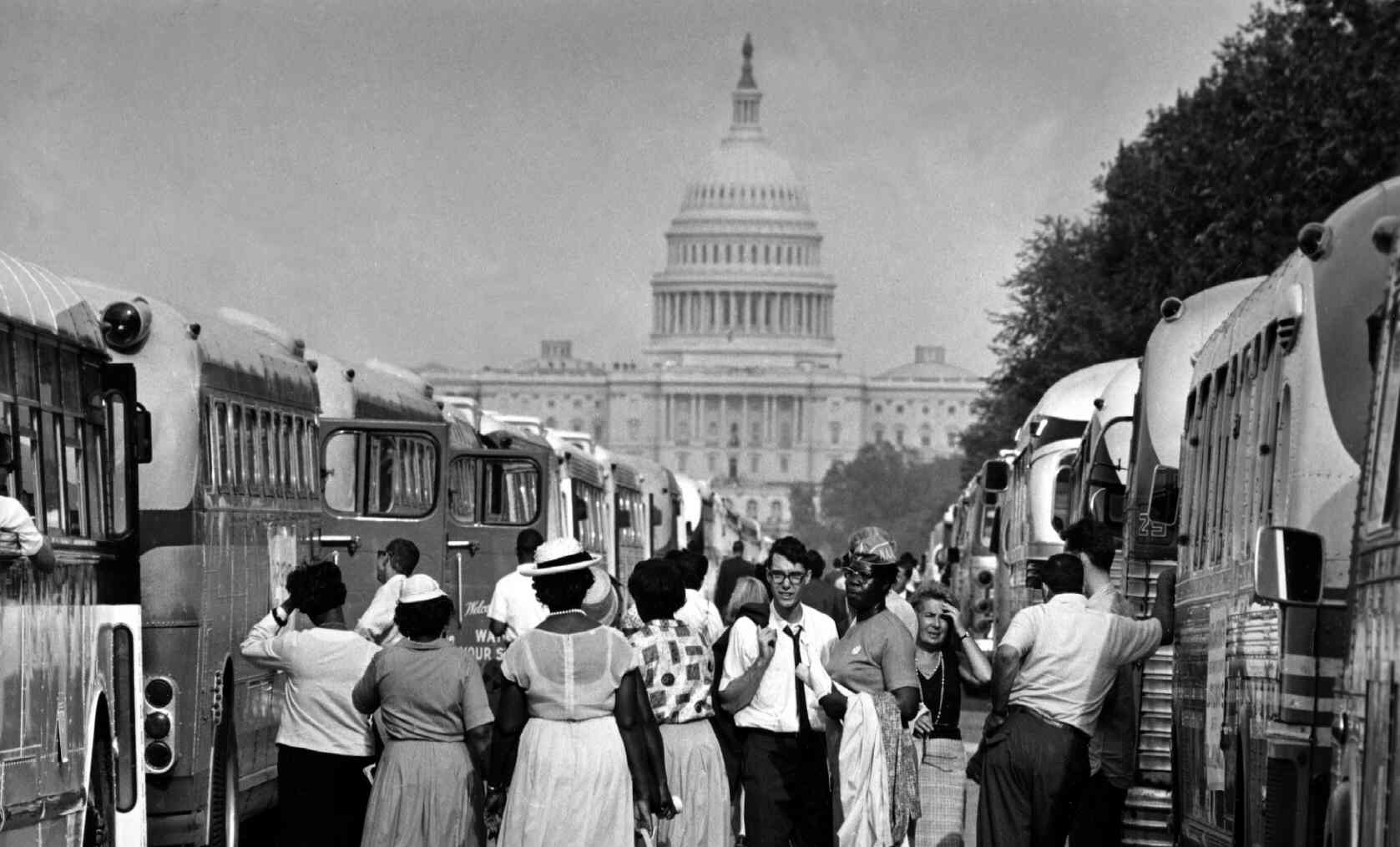
Dozens of extra trains brought thousands more. Many came by car. They traveled from all over from the north, south, east, and west. Many of the long rides began in the middle of the night. As people arrived throughout the early morning it became apparent that the goal of 100,000 would be easily met.
The crowd would be around 250,000. Of these 85% were black and 15% were white.
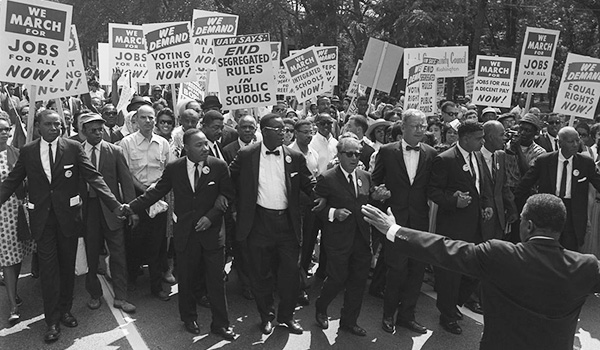
Before they marched, the marchers were given signs to carry. (They were told not to bring their own signs.) These signs were professional looking with various, clearly worded demands - such as We March For Jobs for all, A Decent Pay Now!, We Demand Voting Rights Now, We March for Integrated Schools Now, and We Demand an End to Police Brutality.
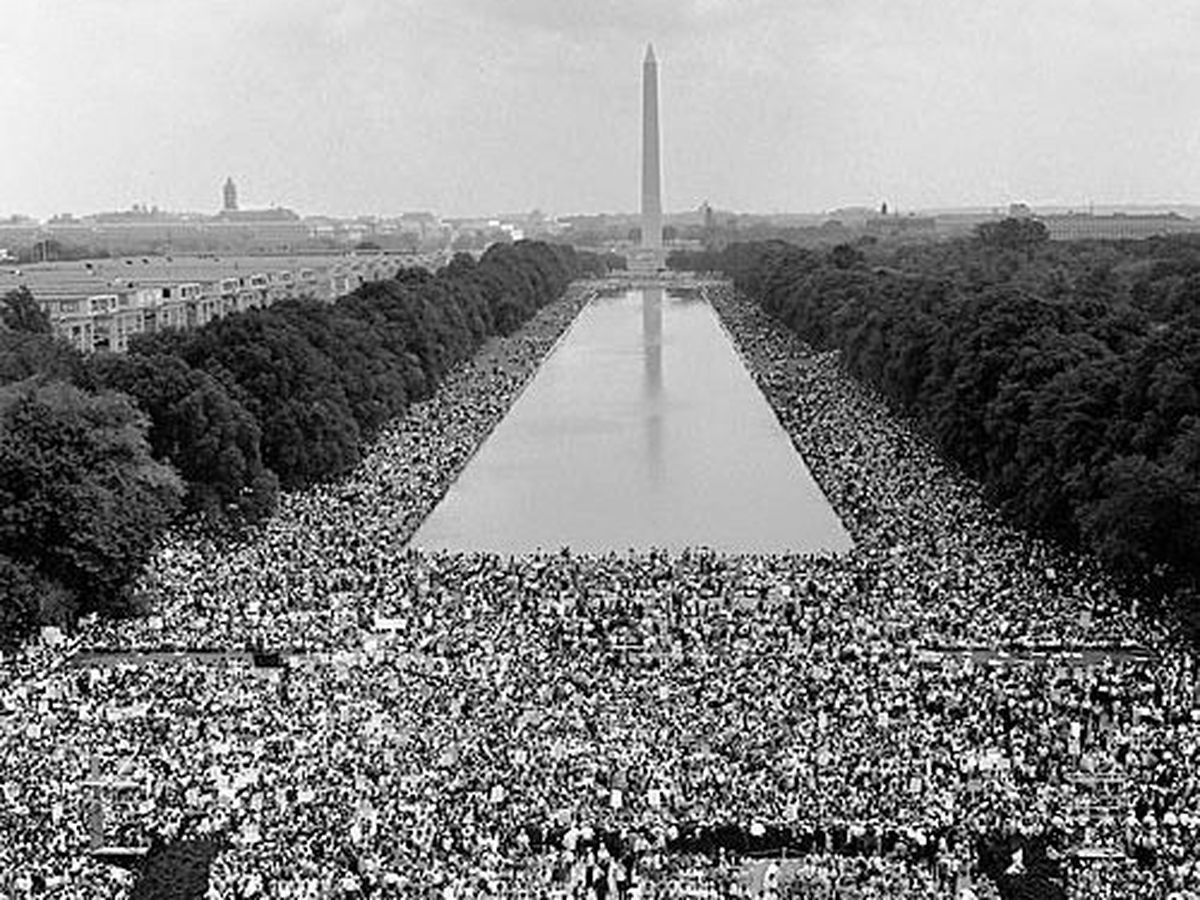
There was a sense of unity among all those present. At one point everyone, blacks and whites, held hands while singing.
There was practically no violence at all that day.
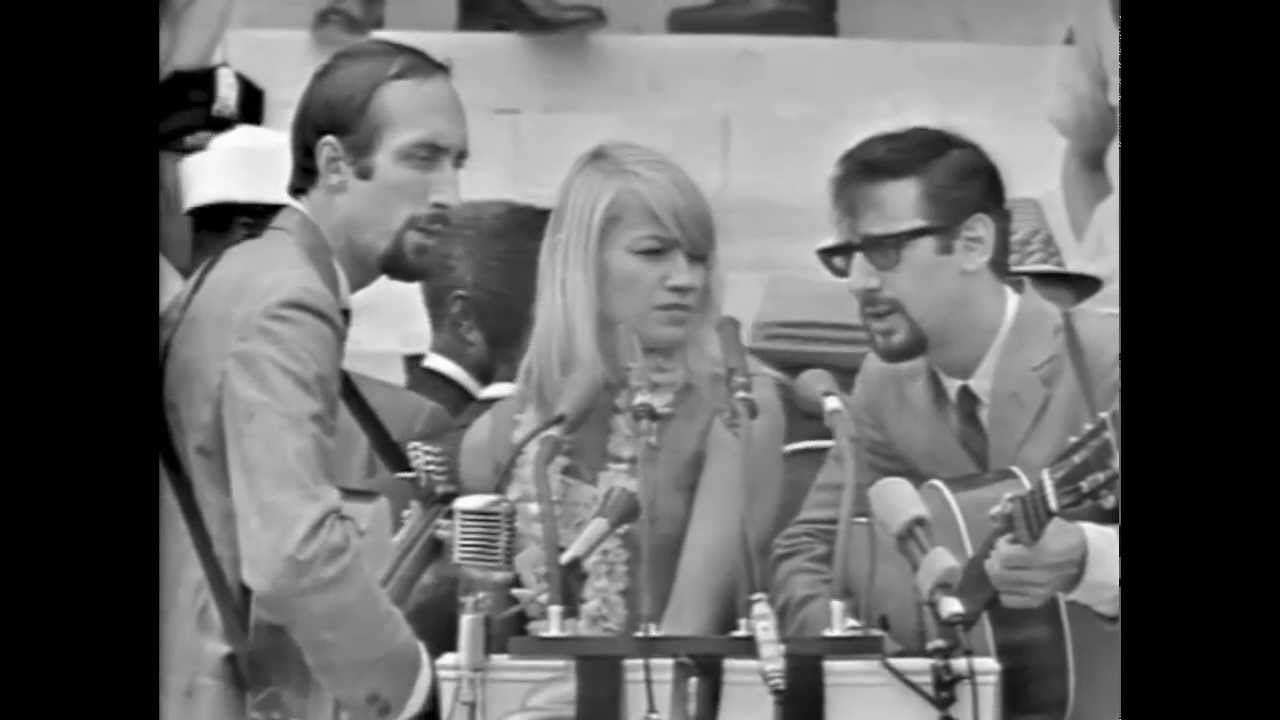
Joan Baez sang the theme song of the civil rights movement We Shall Overcome.
Mahalia Jackson sang two gospel songs. There were several speakers, mostly leaders from the Black organizations including A. Philip Randolph, who had organized the March.

The Dream was the theme to another speech that he had given on previous occasions that Mahalia was familiar with. Martin Luther King Jr. then deviated from the rest of his prepared text to deliver what many consider one of the greatest speeches of all time.
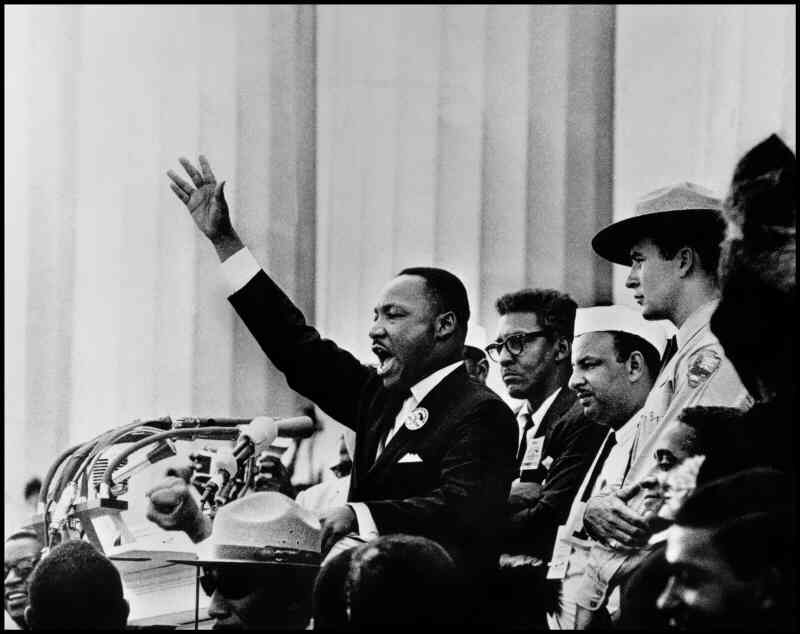
I have a dream that one day this nation will rise up and live out the true meaning of its creed that all men are created equal.
I have a dream that one day the sons of former slaves and the sons of former slaveowners will be able to sit down together at the table of brotherhood.
I have a dream my four little children will one day live in a nation where they will not be judged by the color of their skin, but by the content of their character.

The speech and rally were shown on the major news networks. It was the first time that many whites had ever even heard blacks speaking in a professional manner. For their limited exposure to blacks in that era was usually on television, radio, and in the movies where blacks usually were depicted in stereotypical roles or as fools.
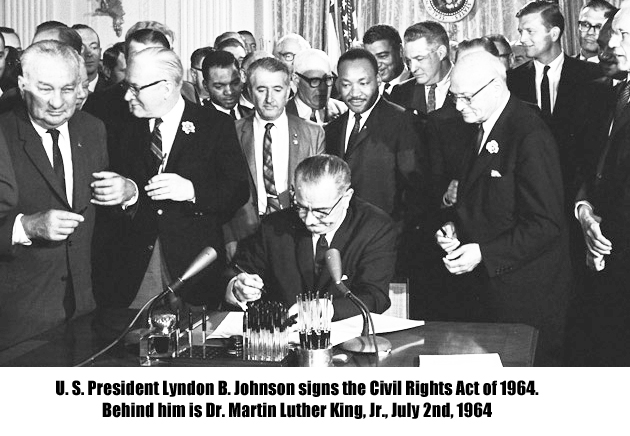
Today, race relations in this country have turned ugly. Hopefully that historic day in August of 1963 can remind us that we can come together and cooperate peacefully to bring about resolutions to our most pressing issues.